Last summer Sprinkles got a hold of a few mathematical biographies, written by Robert Black and published by a small publisher focusing on the homeschooling and educational enrichment market named Royal Fireworks Press. She was planning to at least skim through the books herself before sharing them with the younger bunnies of the household, but once she began reading, she could not put them down. She ended up reading all the books pretty fast, and earlier this year, when she learned that the series had a sixth book, she decided to read that too. In this review, she writes about the whole series, sharing her thoughts on what young bunnies might get out of them (quick hint: a lot!). She also explains why curious adult bunnies might want to read these books, too, whether they like math or not. The quick summary is that the books show us very clearly that people who come up with some of the most fanciful and powerful mathematical theories are all human, with human challenges, human dilemmas, human desires and concerns. And their mathematics is much more interesting in the context of their lives.
Read on for the long version.
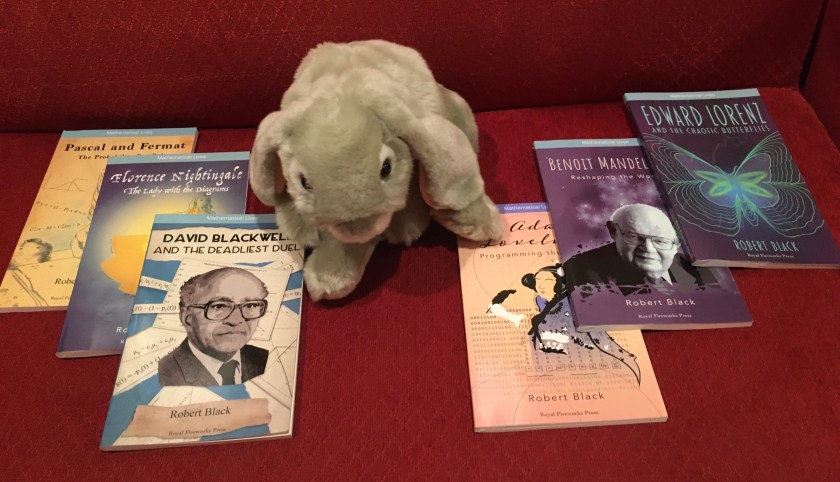
Mathematics is a common topic of discussion in the book bunnies household, and the book bunnies have reviewed many mathematical books written for children for the book bunnies blog. I have personally reviewed Women Who Count: Honoring African American Women Mathematicians by Shelly M. Jones as well as several books written about Ada Lovelace. More generally, you can check out all posts we published that are tagged “math“. So when I got a hold of a neat collection of mathematical biographies, written by Robert Black, that are aimed for a young but curious audience, I thought I could write a review of them all for the blog, too. After all, the young bunnies have been complaining nonstop about how I have not reviewed anything for a long time now.
So in this review, I’m talking about Robert Black’s Mathematical Lives series, currently composed of six books: Pascal and Fermat: The Probability Pen Pals (2019), Florence Nightingale: The Lady with the Diagrams (2019), David Blackwell and the Deadliest Duel (2019), Ada Lovelace: Programming the Future (2020), Benoit Mandelbrot: Reshaping the World (2021), and Edward Lorenz and the Chaotic Butterflies (2022). Most of these names are not household names. One might wonder why the author chose these particular people to write about. (I will get to that at the end of this review.) Even though I had heard of all six of them, and reviewed several books written about one of them, in most of the cases, I did not know the specifics of the lives and achievements of these people. And reading these books, I learned a lot. A lot of mathematics as well as a lot of interesting facts about the lives of six fascinating people.
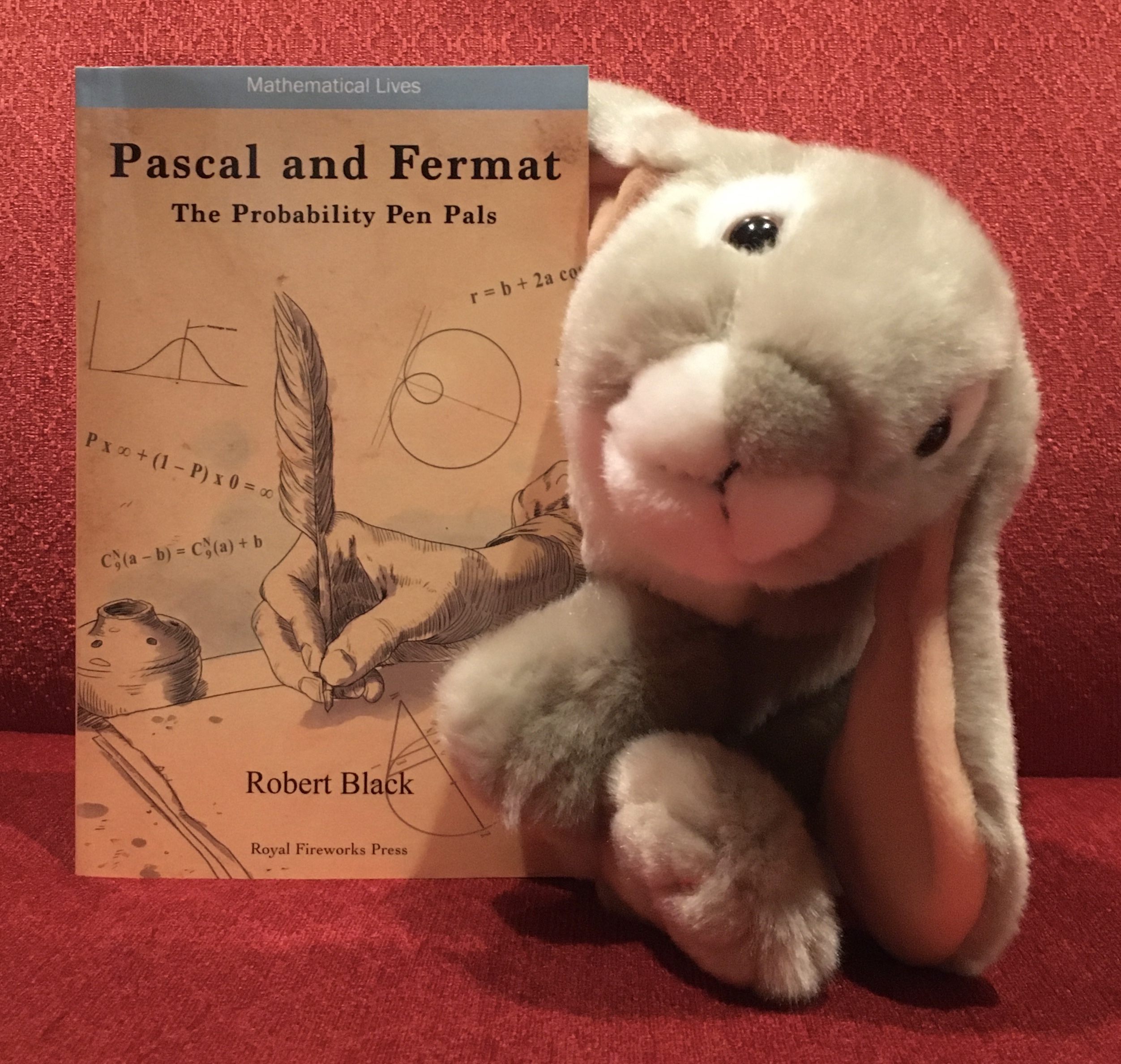

Let me begin with the first book I read from the series: Pascal and Fermat: The Probability Pen Pals (2019). This is the story of Blaise Pascal (1623-1662) and Pierre de Fermat (1607-1665), and how through letters, they developed the foundational concepts of modern probability theory.
The book, like all the others in the series, is divided into ten short chapters. We start with Blaise Pascal, more specifically his family. The author portrays the general setting in which Blaise finds himself, both historically and culturally. Along the way, we learn of the specifics of a question a friend asks Blaise about gambling that gets the ball rolling and leads eventually to the correspondence between Blaise and Pierre de Fermat that in turn leads the two, Blaise and Pierre, to the modern constructs of probability.
The math is sprinkled here and there, always written in an accessible manner, in digestible chunks. The author is writing for a young but curious audience and it seems to me that he knows well how to keep them interested, how to zero in on the crux of the issue at hand, and how to impart significant amount of math accurately all the while keeping things still manageable.
The ten chapters of the book also include a solid narrative on Fermat’s own life story, and the stories of several other mathematicians whose ideas and earlier attempts formed the background to the mathematics the main characters of the book ended up extending, enhancing, and building upon. The author is especially skilled at making connections and finding contexts for the math he is talking about that would be comprehensible to a young bunny, or a curious adult bunny.
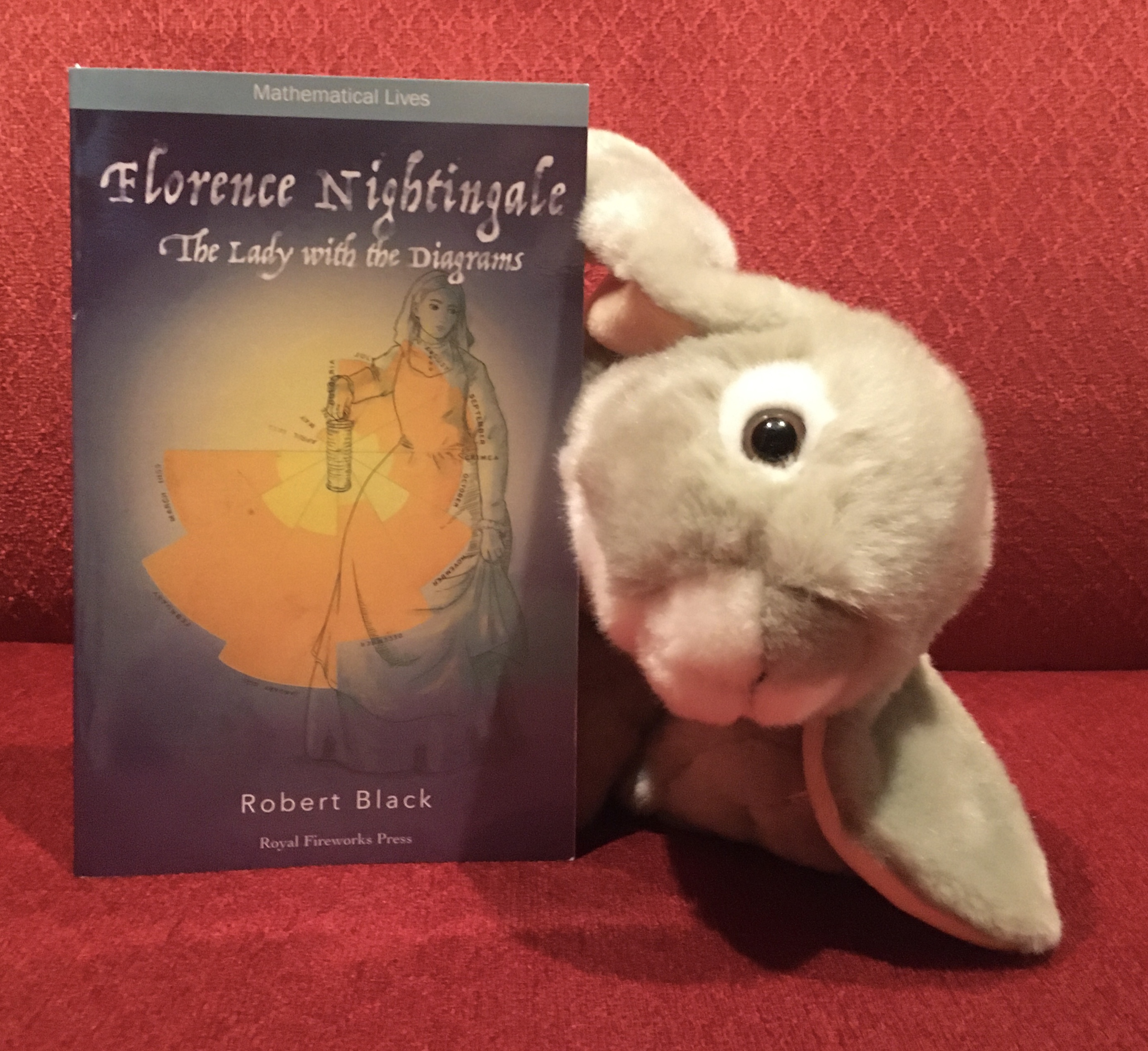

Next let me tell you a bit about Florence Nightingale: The Lady with the Diagrams (2019). This is the story of Florence Nightingale (1820-1910), the lady with the lamp, as she was called by many who wanted to remember her role in modernizing the world of nursing (and along with it, updating the whole medical establishment of her times) during and after her service as part of the British corps of nurses in the Crimean War of 1853-1856. In this book we learn about her other (but related) heritage: the statistical work she did to bring attention to the many challenges of hospital care during the war.
After a short prologue that quickly brings the reader up to speed about the general outlines of Nightingale’s life and how her work related to the modernization of nursing (“The Lady with the Lamp”), the book starts with a chapter titled “Misfit in an English Lady’s World”. We learn about Florence as a young girl, her family background, and the general societal expectations from a young woman of her upbringing. We follow Florence as she grows up, learn more about her interests and concerns, and eventually, arrive at the path that takes her to the military hospital in Scutari (today’s Üsküdar, which English-speaking folks might know from this rendition of a classic Turkish song by Eartha Kitt).
Soon math, or more specifically statistics, comes up as Florence looks for a way to help the data tell the right story about the problems she has observed during the war time: how poor sanitary conditions were leading to significant loss of life and how certain standards of care could improve the situation. Florence develops novel and creative visualization methods that finally allow her to tell the whole story clearly to the public as well as the folks in power who can, and eventually do, make the necessary changes.
The math content of this book, just like in all the other books in the series, is distributed among many chapters, showing up in digestible chunks. Some of this content is directly related to what Florence herself did, and some of it is provided as background for the reader to understand how her work fits in with the main history of the development of the field. All in all, the reader gains a solid understanding of the life and times of Florence Nightingale, as well as her significant mathematical contributions, all within about a hundred pages. The book, just like all the other books in the series, concludes with an appendix titled “Doing the Math”, where the author offers some concrete problems for the interested readers to play with and take their understanding further.
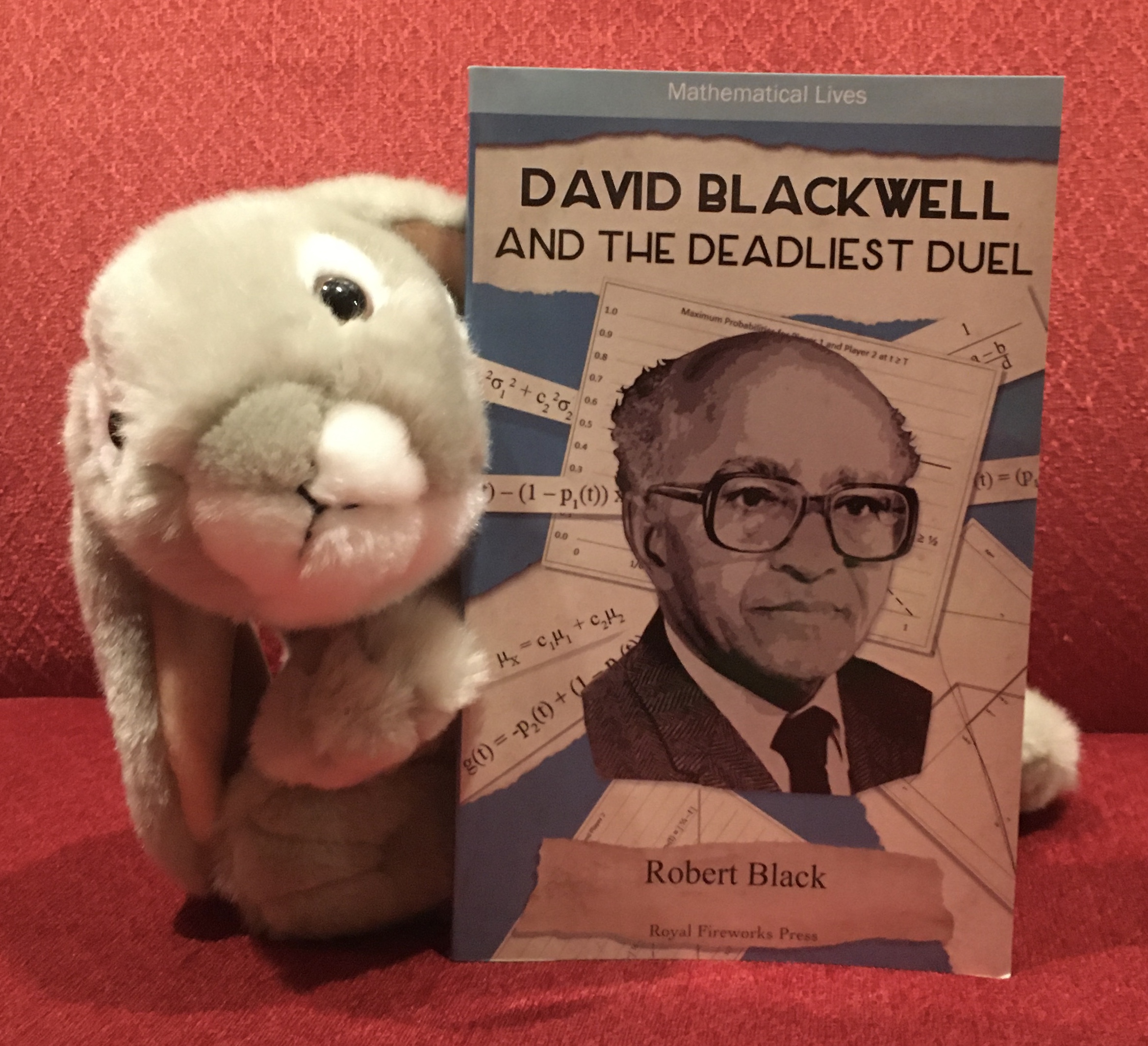

The third book from Black’s Mathematical Lives series that I read was David Blackwell and the Deadliest Duel (2019). David Blackwell (1919-2010) was a mathematician who made significant contributions to game theory, probability theory, information theory, and statistics. He was a brilliant theory builder as well as a problem solver, a great communicator as well as an educator.
David Blackwell and the Deadliest Duel (2019) is organized in a way similar to all the other books in the series. The life story of David Blackwell is intertwined organically with some of the most curious problems that Blackwell worked on and the theories he made significant advances in. We learn about the mathematical study of games, and duels in particular, which Blackwell thought deeply and productively about. We also learn about Bayesian probability theory, which approaches the problems of probability in the background context of what we know and what we believe. These topics could get very hairy and pretty incomprehensible very quickly, but the author skillfully manages to give us exactly what we need to get a a general sense of the theories, only focusing on a handful of concrete situations that clearly display the mathematics without making things too complicated.
David Blackwell had an illustrious career, spanning several decades, and today he is remembered as a brilliant mathematician. There is a well-known theorem and an annual award named after him. However, his story also reflects many instances of how things were a lot more difficult for a black person in the United States, no matter how brilliant. Robert Black, the author, does not shy away from this dimension of Blackwell’s life story, and I believe that young bunnies will be able to appreciate Blackwell’s achievements even more, given this background.
All books in the series include a “For Further Reading” section at the end, right after the “Doing the Math” appendix. In David Blackwell and the Deadliest Duel (2019), this section includes a link to a video recording of a special lecture Blackwell gave many years ago titled “Predicting at Random”. The link provided did not work for me, but luckily, I was able to find it at https://www.maa.org/david-blackwell-predicting-at-random. If you are at all interested in seeing this great mathematician in his element, sharing some math he likes with a wider audience and doing a great job with it, check it out. But even if you are not such a math fan, the book is worth reading, as it tells a unique tale, involving math, sure, but also a whole lot of humanity. A crisp snapshot of the whole twentieth century comes along as a bonus.
Incidentally this book made it to the 2021 Honors List of the Mathical Book Prize. I’d say this was well deserved!


I approached Ada Lovelace: Programming the Future (2020), Black’s book about Ada Lovelace (1815-1852), the woman who is today recognized as the first computer programmer in the world, with some unease. I read a lot about Ada Lovelace. And as I mentioned above, I have reviewed several books about her written for a younger audience. I have also read a lot of books about her written for a more mature audience. In short, I already knew a lot about her and her work, so I was wary. I was also a bit worried that I would find something I did not agree with in Black’s presentation, something that would not sound right to me, and that would taint my positive opinion of his meticulous work, which so far seemed to me to be not only accessible and engaging but also mathematically accurate to a surprising level (I say “surprising” because it is often really difficult to explain sophisticated technical content to a young audience, and Black has done an outstanding job with it).
Let me quickly say that my concerns were unwarranted. I liked the book a lot. Black does an excellent job telling the story of Ada, as well as the technical work she contributed to. The many mathematical ideas presented in the book are accurately described, and Black does not withhold from his reader the historical debate about exactly what parts of the work credited to her actually belongs t0 Ada. All in all this is a well-written, well-balanced account of Ada Lovelace and her achievements.
Once again Black develops the life story of his main character within the broader historical, cultural, and social context of her time. The mathematical context is presented clearly as well. Black is also an excellent storyteller. Even though I knew almost everything in the book (having already read over thirty books on Lovelace myself), I enjoyed reading it page by page, line by line, eagerly looking forward to seeing how he would tie things up.
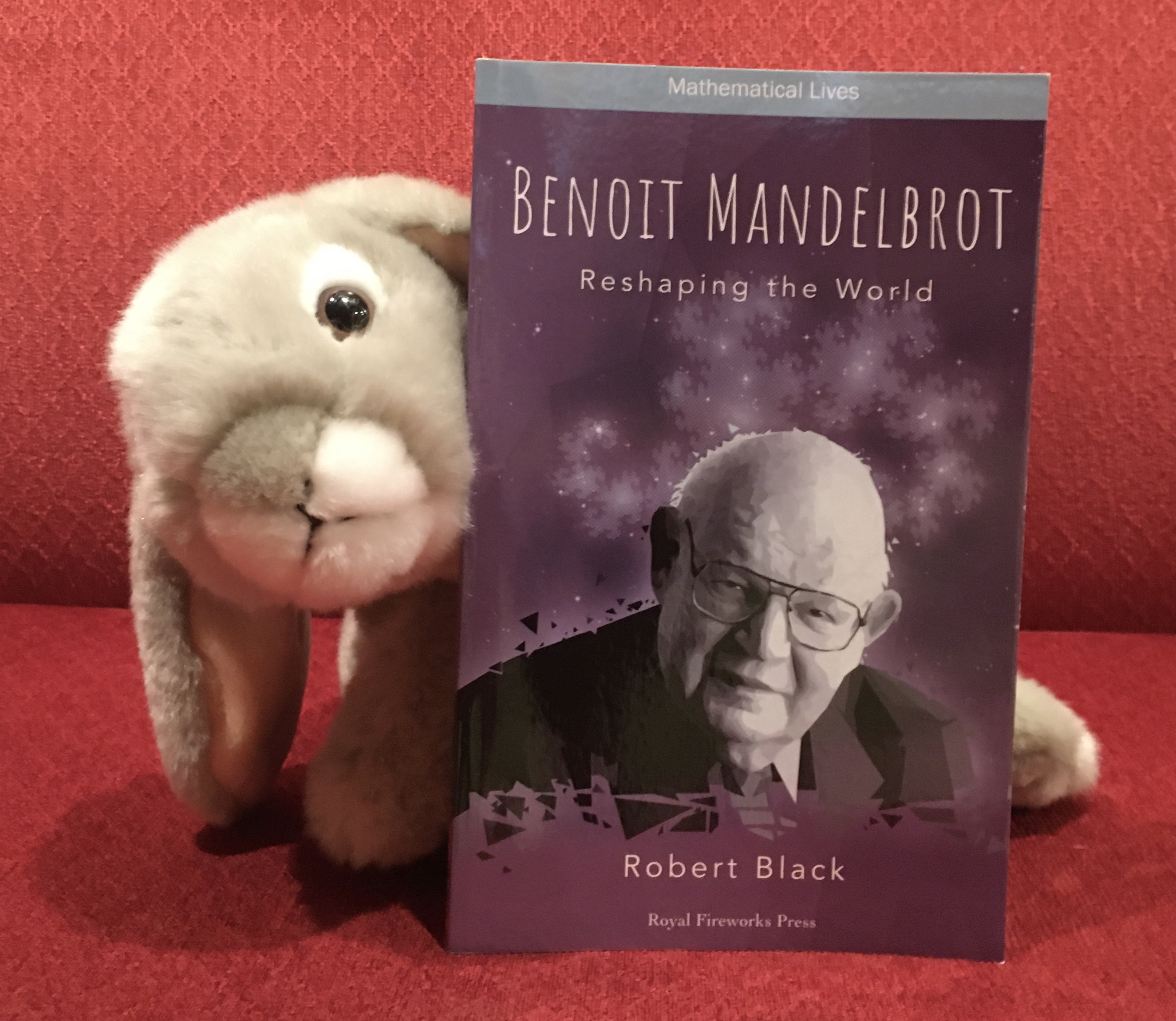

The fifth book in Robert Black’s Mathematical Lives series is Benoit Mandelbrot: Reshaping the World (2021). The book tells the story of Benoit Mandelbrot (1924-2010), who is known as the father of fractals. Even if you have not engaged with theoretical mathematics in the past, you must have seen or heard of fractals. Even Elsa mentions them in her famous song “Let It Go”.
Here is the amazing fractal called the Mandelbrot set (named after the guy this particular book is about, because he is the one who discovered its construction and explored some of its complex features):

Public Domain image from Wikipedia, from Link
You can read more about the Mandelbrot set here. But let us get back to the book.
We start with a prologue as always. This one is titled “Clouds Are Not Spheres”, a quote from Mandelbrot himself, whose work offers us an alternative way to think about the world around us, different from the standard one we are taught at school geometry classes, with their emphasis on Euclidean geometry (triangles, circles, spheres, and so on). The prologue whets our appetite, but as usual, the first chapter begins with the childhood of young Benoit and his early life with his family. We travel with the Mandelbrots as they move from one place to another, trying to find a place that is safe for their Jewish family (which, given the time period, was exceptionally difficult to do in Europe). We see Benoit thrive mathematically nonetheless.
The mathematics incorporated into this book, as I expected after having read the previous four books, reflects its main character, and is as eclectic as the person who created said mathematics. One of Mandelbrot’s main strengths seems to have been bringing together seemingly disparate ideas and seeing the connections between them in the form of certain simple rules describing complex systems. And the disparate ideas he brought together are really diverse. The book tells a fascinating story, and shows us some of the connections Mandelbrot does make, and overall, Benoit Mandelbrot: Reshaping the World is a very satisfying read.


The most recent book in Black’s Mathematical Lives series is Edward Lorenz and the Chaotic Butterflies (2022), which is about Edward Lorenz (1917-2008). Some of the adult bunnies reading this review might know that his name is closely associated with that of Benoit Mandelbrot from the previous book. The longer story is told exquisitely in a 1989 book which has now become a classic Chaos: Making a New Science by James Gleick. But the shorter story, as told in the two volumes by Black, is still fascinating.
Lorenz and Mandelbrot did not really work together, but their work complements one another. Lorenz began in the world of meteorology and his explorations to understand and predict weather patterns took him from computer modeling to the more general exploration of dynamical systems which are extremely sensitive to changing initial conditions. He discovered various contexts where simple tweaks on the settings of a given system led to drastically different behavior. This in turn led him to the theory of chaos.
Black once again tells his story within a completely developed context. We read about Edward Lorenz, and his childhood days. We read about how he found his way into meteorology, and how his interest in weather modeling was influenced by the Second World War. We learn about other pioneers of weather modeling and how Lorenz built upon their work. And here and there, we get a good number of glimpses into the actual math involved.

Overall I think that each of the books in the Mathematical Lives series by Robert Black make for excellent reading, both for young bunnies and the adult ones. Young readers should probably already be somewhat curious about math to be able to get much out of the books, but once they are interested enough to pick up a book about “some guy who seems to have done some neat math” or “some lady who apparently did some cool math”, these books will definitely carry them along all the way to the end. They are well written and engaging enough to keep the reader’s attention, for sure.
Now for the adults: I am not sure anyone who is not already somewhat curious about math or mathematicians would be picking up a book of this sort, but I wish they would. These books show that math is not a stuffy subject, that math is alive, and that the people who create it, who live their lives filled with it, are fully human, with human challenges and human concerns. The historical, cultural, and the social contextualization provided in each of the books also allows us to see where we are today and how we got here from where the characters of the book were when they lived. Furthermore, the books make so many concrete connections with the real world that it is almost impossible for anyone to say math is a useless game of pure abstractions.
In some ways, these concrete connections may be a bit disturbing. War plays a significant role in the lives and the mathematics of at least three of the mathematicians in these books: Florence Nightingale in Florence Nightingale: The Lady with the Diagrams (2019), David Blackwell in David Blackwell and the Deadliest Duel (2019), and Edward Lorenz in Edward Lorenz and the Chaotic Butterflies (2022). (Especially in Lorenz’s story, we read about some pretty terrible war acts though Lorenz himself is not directly connected to them in any way whatsoever.) War also shows up in Ada Lovelace: Programming the Future (2020), when Alan Turing and the story of the breaking of the Enigma code come up, and in Benoit Mandelbrot: Reshaping the World (2021), when we see how significantly the Second World War impacted Mandelbrot.
But I still very much appreciated reading each and every one of these books. The war connections did not undermine the achievements of these amazing people for me. The problems they solved, they believed they were solving to help humanity. And for the thrill, the curiosity, the challenge of the problems themselves, which is itself such a human thing! (Of course it should also be acknowledged that mathematicians and others who work in problem-solving oriented disciplines like engineering and technology should always keep in mind to what use their efforts are being put to.)
In the end what is my answer to my original question of why the author might have chosen to focus on these six people? Without actually asking the author himself, my answer would merely be a conjecture, but here it goes: I think the author is writing about people and mathematics that he himself finds interesting and important. I am saying this because while reading these six books, I could distinctly sense the tangible, genuine interest of the author in his characters, as well as his fascination and excitement about the math he was writing about.
Also mathematically there are common themes among the works of the mathematicians in these six books. In each book, the math never stands alone; there are always clear real-world connections, both in the origins and the eventual applications of the problems they involve. And the author’s focus on these connections make the books and the math extremely engaging. The probability theory first developed by Blaise Pascal and Pierre de Fermat described in Pascal and Fermat: The Probability Pen Pals (2019) finds its fruits in some of the statistical work done by Florence Nightingale in Florence Nightingale: The Lady with the Diagrams (2019), and the game theory and probabilistic modeling done by David Blackwell in David Blackwell and the Deadliest Duel (2019). The theories of computation that Ada Lovelace’s work is a natural foundation for as described in Ada Lovelace: Programming the Future (2020) eventually allow Benoit Mandelbrot in Benoit Mandelbrot: Reshaping the World (2021) and Edward Lorenz in Edward Lorenz and the Chaotic Butterflies (2022) to see patterns and emergent phenomena that could not be easily seen without computers.
I recommend these six books to anyone willing to check them out, with no reservations, and with the strongest enthusiasm. You will learn some cool math, you will meet some very interesting people, and you will understand our current world so much better.

Very interesting! I never knew that Florence Nightingale was also a mathematician. I always associated her with nursing.
If Sprinkles ever has the opportunity to read about Guillaume de l’Hôpital, I think she would find his life very interesting.
LikeLiked by 1 person
Hopefully the little bunnies will enjoy reading about these famous mathematicians and get inspired by them.
LikeLiked by 1 person